Planning a family fun day with educational activities, wildlife adventures with lions, tigers, and bears? Look no more! You can expect all this and more at The Papanack Zoo located in Wendover, Ontario. Laval Families Magazine had a chance to visit and sit down with the zoo’s owner to learn more about the zoo and how families can benefit from a day filled with adventure.
How it
All Began
The
Papanack Zoo was purchased in 2014 by Kerri Bayford. Her son, Kurtis Bayford,
is taking care of the family-run zoo business. The zoo was purchased with the
intention of offering the best possible environment for the animals and provide
an exciting educational adventure for visitors.
Kurtis’s childhood is where the passion all began. The Bayford family developed their love for taking care of animals by rescuing baby racoons every season and helping to re-adapt the animals to be set free in wildlife. Bayford developed his skills for nurturing animals at a young age by observing his mother’s love for all living creatures. When the zoo was purchased, he quit his full-time time job out west and moved to Ontario to help with the zoo and pursue his love for caring for animals by his mother’s side.
Since the Bayford family purchased the zoo, at least 90 % of the zoo’s 48 acres has been demolished and remodeled to help better foster a natural feel and look for all the animals in their care. The Papanack Zoo put the animal’s welfare as their top priority when refreshing their land and reinvesting their funds. There is a remaining 15 acres of untouched land within the zoo’s perimeter, which the Bayfords would like to use to expand the enclosures for the animals.
A
Typical Day at the Zoo
What
does a typical day at the family’s zoo look like for the workers before the zoo
opens its doors to visitors? The Papanack Zoo is not subsidized by the
government. This means the zoo reinvests all its money earned to ensure the
animals’ needs are met and provide the best care physically and emotionally.
The caregivers start by feeding the baby animals at 7 a.m. Depending on what baby animals they have on site at any given time, this will determine what types of foods will be offered. Then, they provide hay and water for all the livestock animals, such as, cows, pigs, geese, buffalo and many more. At this time, they also prepare various fruits to feed the monkeys. Dry feed gets served to all the other animals.
This task is distributed just before lunch time. The carnivore animals consume approximately 300-400 pounds of meat per day. Two local companies in Alexandria donate meat to the zoo. All fresh fruits and vegetables are purchased by the zoo. For example, a wolf will eat on average five pounds of meat per day. A tiger will eat around 30 pounds of meat per day. A lion will eat 20-25 pounds of meat. After meals are served, the zookeepers continue to clean all the enclosures throughout the zoo to ensure the animals’ surroundings are kept clean and safe. Enrichment learning is also a mandatory element on their daily routine schedule for the animals. New toys, additional features, and cognitive games are included in their enclosures to provide stimulating growth.
Some caregivers and family members of the zoo owners live on site to better accommodate the animals and restore any structures or enclosures that may need repairs urgently. With the family’s background in construction, repairs are done promptly. This is especially important in the winter months with snow and ice that could damage their facility or animal housings.
There are many benefits of being hands on with the animals. Firstly, it is better for the animals as the caregivers can provide a safer environment while the animals are in their care. A trusting relationship between animals and the trainers or specialists helps to support stimulating and enriching practices within their enclosures. One such example is moving around to play with the animals in other locations within the zoo to offer new smells and experiences. Health check-ups and vaccines by specialists and vets are easier to facilitate when the animals are used to being handled by humans daily. Dr. Collard, a local veterinarian, is The Papanack Zoo’s preventive 24 hour on-call vet for the animals in their care.
A
Global Experience
What
kinds of animals does The Papanack Zoo care for? The zoo houses summer
residents and winter residents such as lions, tigers, bobcats, foxes, cheetahs,
bears, monkeys, lemurs, flamingos, exotic birds, peacocks, ostriches, zebras,
cows, ducks, geese and so much more! They have reptiles such as snakes,
lizards, tegu, alligators and more.
Animals that are native to Canada can live in their residences all year round such as bobcats, wolves, foxes, cougars and much more. The winter residents are cared for differently at various times of the year such as reptiles, smaller primates, tropical birds, wallabies, and kangaroos, for example.
“The wolf has always drawn my attention since I was a little kid,” says Bayford. “It just might be because they are in a pack like family and that they work together,” he says, drawing a parallel between the strong bonds between wolves and his own bonds working and running a family zoo.
What Does
The Papanack Zoo Offer for Families?
The zoo
is a friendly and accommodating destination for families. A park and picnic
area are available for families to come and stay for the day.
They also host kids’ birthday events and offer two types of birthday packages. Enjoy an exciting birthday filled with exploring animals, learning about their environments, and feeding some monkeys. The birthday party is complete with lunch and a Papanack birthday cake.
The zoo sells animal food to hand-feed some of the animals at the petting zoo area and throughout the zoo. The visitors can feed these animals from all angles to fully enjoy the experience. The friendly animals that can be fed fruits and vegetables vary from rabbits, ducks, geese, cows, to lemurs, monkeys and much more.
The zoo also offers some exciting activities to involve the community. Food drives are encouraged yearly at the zoo. The Papanack Zoo also does a ‘Christmas in July’ event. In October, the zoo organizes ‘Boo at the Zoo’, where they decorate the park, and children can come dressed in costumes and fire dancer shows are offered. The zoo hands out candies to all visitors.
Pricing rates are available on their website, consisting of different age groups categories and a reduced rate for military and front-line workers. Their pricing rates are kept low so that families can enjoy a day filled with educational adventures. “We do it for the animals. We try to inspire anybody to want to do what they can to help them in the future, whether it’s here at the zoo or in the wild,” says Bayford. He encourages patrons to explore ways to donate money to conservation or animal funds.”
Behind
the Scenes at Papanack Zoo
Since
the zoo is closed during the winter months, the impact of the COVID-19 pandemic
didn’t directly affect the zoo at first; however, their usual camps that they
offer through schools and organizations were cancelled over the past two years.
The Bayfords found various approaches to be financially resourceful to keep the
zoo afloat.
The zoo has launched three tiny houses referred to as ‘Bunkies’ which are available to rent overnight on their grounds to indulge in the full Papanack Zoo experience. The experience is promoted through their website and on several renters’ sites. Future plans are to build other Bunkies to offer more housing opportunities for visitors.
The Papanack Zoo would also like to continuously build on expanding the animal enclosures to ensure rich, natural environments for all the animals in their care. There are plans to build another good-sized building to house the non-Canadian native animals. This will invite people in the winter months to be able to visit certain animals such as the monkeys, tropical birds and more, that they wouldn’t typically be able to see in the colder months.
When the Bayfords purchased the zoo, they put their funds towards improving and updating the enclosures for the animals. Now that the extra services they offer have generated profits, soon, they would like to change the zoo’s name to “Wendover Wildlife Park and Sanctuary”. They feel the new name will encompass a stronger relationship with the community and pay homage to the family’s devotion and love for animals.
Animals
on the Big Screen
The zoo
is also constructing a 6000 square-foot commercial and film studio onsite. 2000
square feet will become office space with a second floor that will also have a
2000 square-foot client space with 5-bedroom suites for accommodating housing
during filming production. The Papanack Zoo offers film companies an
opportunity to stay at their site while on production. Offering the service to
film on site is less stressful for the animals and staff, rather than travelling
for extended periods of time. This project was developed as the zoo was asked
for their animals to participate in many films and commercials over the last
couple of years.
The zoo receives a lot of calls for North American animals to feature in film production, such as raccoons, foxes, and bears. The Bayfords decided this would be a successful project to do through the winter months to help raise funds for the zoo since it’s closed during the colder months. As this project became more successful, the zoo now offers 10 % of funds raised to the conservation of wild animals and reinvests the profits back into the zoo for the animals.
Educational
Programs at The Papanack Zoo
The Papanack
Zoo also offers summer camps, such as the very popular Junior Zookeeper Camp.
This camp is comprised of three different levels of zookeeping for returning
participants. This weeklong camp provides a behind-the-scenes look at zoo
keeping. Some of the activities include following the zookeepers throughout the
day, being up close to animals, special photo opportunities, learning about
animal behavior and feeding, etc. This camp also gives you access to visiting
some special animals and learning about conservations. The parents are welcomed
at the end of the week to join in the graduation ceremony. A lifetime
membership for all participants with a lifetime of memories is guaranteed.
The zoo also offers overnight weekend camping for groups. This is a weekend experience filled with interesting zoo tours and fun, educational activities animated by the zookeepers. Night safaris, lion feeding presentations and campfires are all part of the zoo’s camping itinerary.
Zoo Therapy is a program offered for people with different special needs or to nursing homes for the elderly. This program can be offered on site or certain smaller animals can be brought to another location. The intentions for this project are to allow people to get hands on and teach them about different kinds of animals. The zoo strives to brighten the participants’ day through zoo therapy.
The Papanack Zoo also offers a Bear Safety program which is run by world-renowned trainer Ruth Labarge. She is the main caregiver, owner, and trainer for the bears at the zoo. She has been a bear trainer for 55 years. Through her programs, she teaches about distinguishing between the black bear and the brown bear. She teaches about being safe in the wildness and what to do if you come across a bear.
Another educational program offered at the zoo is the Conservation of Cheetahs run by owner and caregiver, Carol Plato. In her workshops, she teaches about the history of cheetahs, caring for cheetahs and their surrounding environments to prevent extinction.
A new adventure called Capital Film Wranglers are animal trainers who work with The Papanack Zoo’s animals that are used in films on site. Bayford has become an official animal trainer to better understand and stimulate the animals housed at the zoo. A renowned wolf trainer along with Labarge have worked closely with The Papanack Zoo’s animals in many films. Bayford uses the filming process with the Wranglers as way to discover and be inspired as much as he can with the trainers involved to gain an expertise on caring for his animals.
Zookeeping
at its Finest
Zookeepers
are hardworking individuals. It can be a physically demanding job to clean and feed
the animals using large or heavy equipment. Zookeepers need to have a passion
for the animals and the work that comes with it. They should be patient, loving
and able to earn the animals’ trust. “You definitely have to be reliable and
committed,” says Bayford.
The Papanack Zoo is a family-run business. The Bayford and their team’s passion lies in providing a safe and loving environment for all the animals. The zookeepers and staff love to spend the day touring the park, sharing educational information about the animals and the premises, and creating memories with visitors.
The Papanack Zoo team are grateful for the help and support of staff, family, friends, volunteers, and people who donated materials, time and money, as well as those who helped the zoo at different times of the year like opening and closing. “Thank you for your generosity. We couldn’t have done any of this without your support,” says Bayford.
So come on down for some exciting adventures while visiting The Papanack Zoo! “Every time you come, it will look different,” explains Bayford, a testament to the family’s commitment to continuously improve the park to delight the animals and visitors alike.
The zoo is open daily from 10 a.m. to 5 p.m from the Queen’s birthday (mid-May) to Thanksgiving weekend (mid-Ocotber). For more information, visit papanackzoo.com or contact the zoo at 613-673-7275.

 In The Latest Issue:
In The Latest Issue:
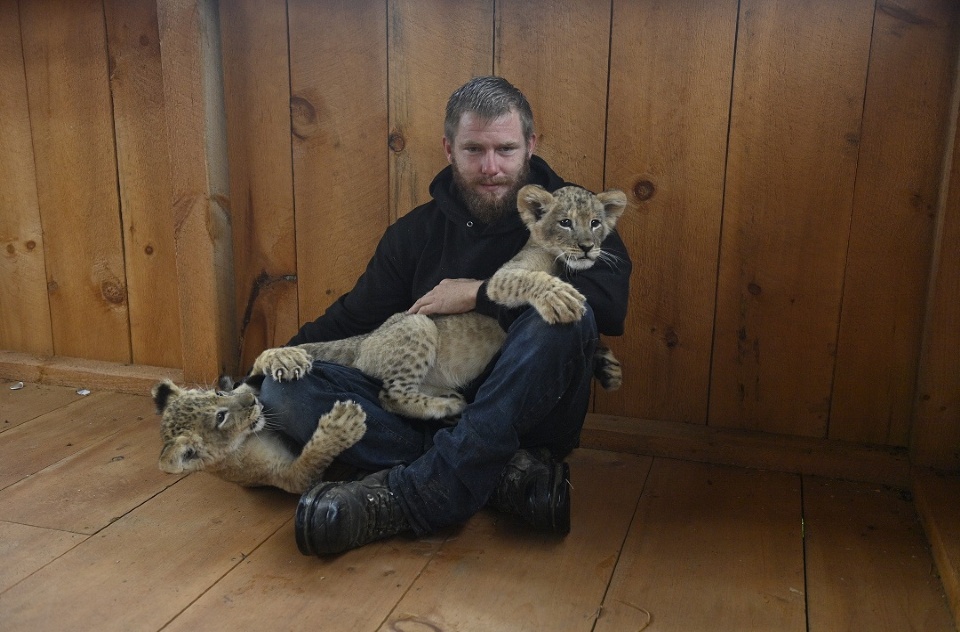
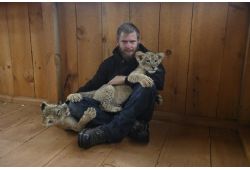
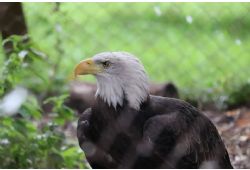
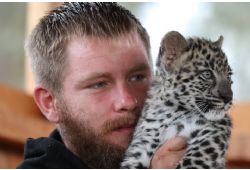
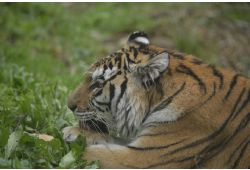
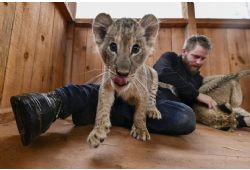
 BY:
BY: 

Tweet
Share